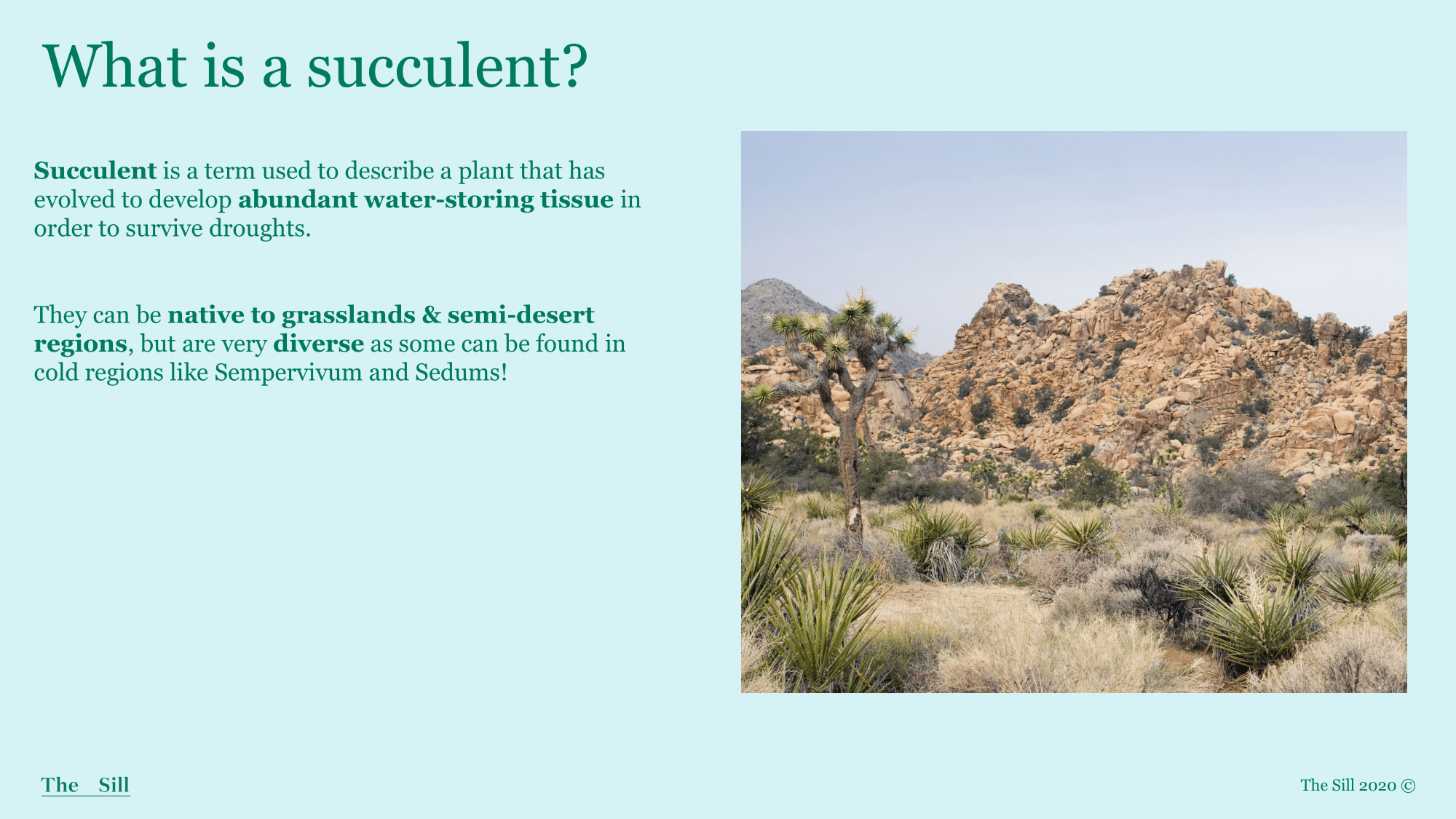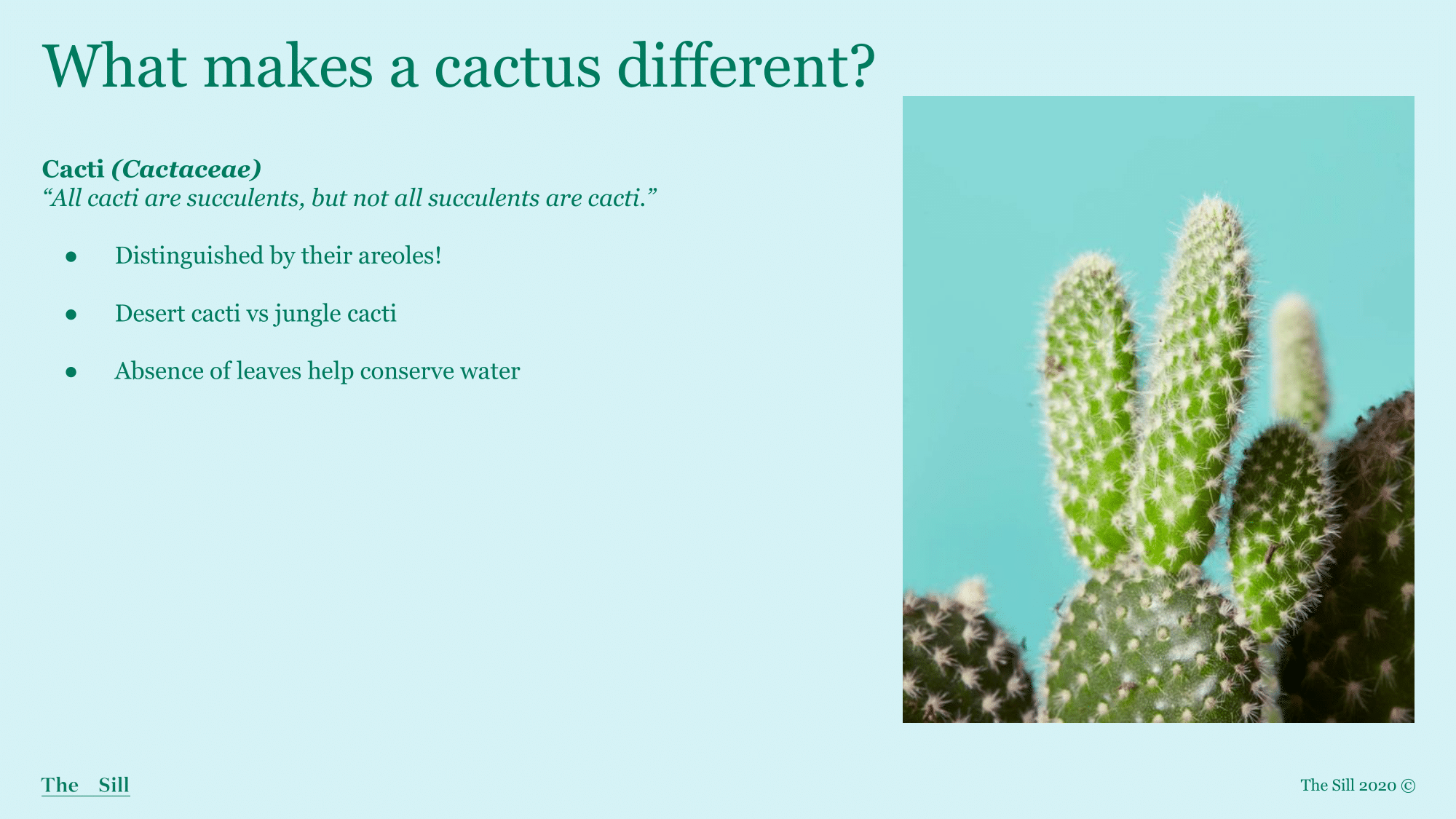Succulents
Part 1 of 3

What Are They?
The fleshy leaves are the watering storing tissue which is why most succulents are thick and plump.
- jungle cacti (Rhipsalis), lithophytic (grows on rocks)

Versus Cacti
Cacti are considered succulents due to their water storing tissue but they do not belong in any of the true succulent families and reside in their own family, Cactaceae.
Cacti are distinguished by their areoles which are well defined areas on Cacti that sprout clusters of spines and cover cacti in a regular pattern; blooms also aries from these! Some cacti, however, can be spineless but the aeroles are still present as very small hairy clusters. Some succulents may have evolved to take on the shape of cacti (Euphorbias) but they do not bear the same areoles which makes it a succulent instead of a cactus.
Cacti can be broken down into two groups, jungle cacti and desert cacti. There are jungle cacti that are native to tropical jungles where most are found growing as epiphytes (think of Rhipsalis, Schlumbergera, Epiphyllum, Hylocereus, etc) that require more shade and higher humidity. Whereas, desert cacti grow in the American southwest, and South America where they are exposed to high temperatures, intense sunlight, and little to no rain.
- 1. Succulents
- 2. Care
- 3. Propagation
